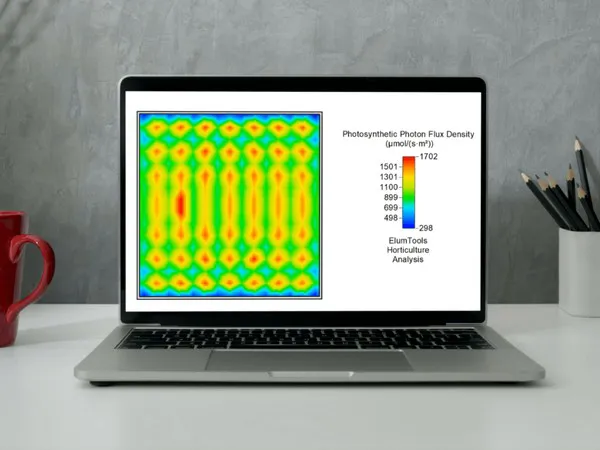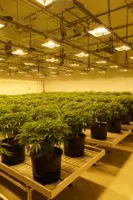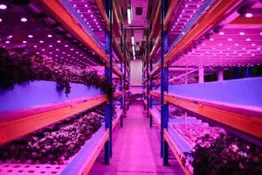Commercial controlled environment agriculture (CEA) allows growers to create an ideal environment catered to plant growth, regardless of geography or outdoor conditions. Growing indoors requires the use of artificial lighting in place of natural light, making your lighting design plan a crucial component of your overall cultivation facility design.
There are many variables to consider when making your lighting selection and layout. Every aspect of your indoor grow will influence this process. Start by answering these questions.
- What will you be growing? (Cannabis? Food Crops? Ornamentals?)
- How much do you intend to produce?
- How much horizontal and vertical space is available to you?
- Do you have any electrical or water resource constraints?
- What is your budget?
This information will help guide the decision-making process later on as you begin shopping around for designers and specific lighting fixtures.
Why does lighting design matter?
Lighting design in commercial grow operations matters for several reasons. First, lighting design affects how much energy you will use, both for the lighting itself and for the climate control system. This of course will have a direct impact on your operating costs.
Similarly, your lighting selection will affect the amount of heat generated in each grow room. For this reason, you should work with your mechanical engineer to discuss how your lighting design will impact your HVAC system. For example, LED fixtures typically produce significantly less heat than HID lights, and will decrease the tons of cooling necessary.
Lighting design also affects the quality of your plants. A well-designed, carefully selected lighting layout (in conjunction with the right HVACD system, best horticultural practices, and other variables) can minimize your plants’ growth cycle and maximize your yields.
Understand that average PPFD will decrease as you take mounting heights into consideration. This is why having a professional help with your design can be beneficial. They should be able to apply their expertise in cultivation lighting and PPFD modeling capabilities to provide a more comprehensive design that will help you create the kind of lighting environment you are looking for.
Layout approaches
Whether you are growing cannabis, leafy greens, microgreens, tomatoes, or another indoor crop, your lighting layout will be largely guided by the number of levels you plan to grow on. The number of lights you need will change based on available space and the growing method you choose.
However, commercial cannabis growers have an added layer (no pun intended) of complexity when designing their lighting; they must account for the different growth stages of the plant from cloning to flower.
Single-tier
The simplest lighting approach is to place your plants directly under an overhead canopy of lights. Lighting selection should be consistent within each room, although with the right controls, you can test various lighting schedules to see what produces the most desirable results.
lighting schedules to see what produces the most desirable results.
Cannabis plants are usually relocated from room to room as they grow. Naturally, as your plants get bigger, you will be able to fit less plants per light, meaning that veg and flower rooms will require more lights per plant than the nursery. For example, veg rooms usually have 5 to 6 plants per light, and nurseries usually have anywhere from 20 to 100 plants per light. Keep this in mind when calculating room sizing and lighting placements.
Multi-tier  For vertical farms, lighting designs must account for growing in multiple tiers. This is achieved by mounting lights above each layer of the grow racks.
For vertical farms, lighting designs must account for growing in multiple tiers. This is achieved by mounting lights above each layer of the grow racks.
Vertical farmers do not typically have the freedom to choose HID lighting as it requires a much greater height above the canopy than LED fixtures, which typically only require a height of 1ft above the canopy. But some growers have claimed to use their LEDs to achieve unique results, such as changing the color of their produce or boosting vitamin C levels, all by simply altering their lighting recipes.
For more information:
Surna Cultivation Technologies
info@surna.com
surna.com
